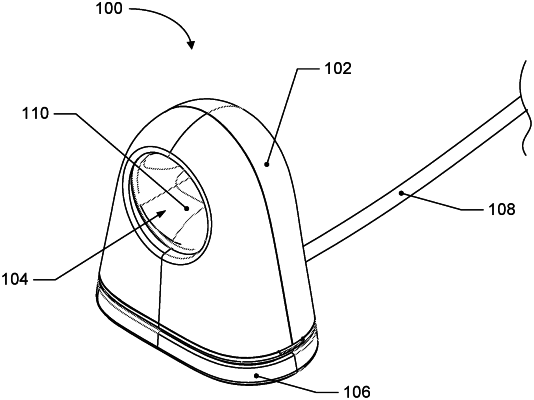| CPC A61B 5/02241 (2013.01) [A61B 5/6826 (2013.01); A61B 5/7278 (2013.01); A61B 5/02116 (2013.01); A61B 5/02225 (2013.01); A61B 5/1121 (2013.01)] | 20 Claims |

|
1. A device for measuring biometric data, the device comprising:
a housing defining an opening;
an inflatable bladder disposed within the opening, the inflatable bladder defining, at least in part, a pressurizable volume;
a pump fluidly coupled to the inflatable bladder;
one or more first sensors in fluidic communication with the inflatable bladder and configured to emit acoustic waves;
one or more second sensors comprising one or more microphones configured to acoustically determine a proximity of the device to a user's heart;
one or more accelerometers configured to measure, based on the proximity of the device to the user's heart determined by the one or more second sensors comprising the one or more microphones, a roll angle of the device about a first axis which is orthogonal to a vertical axis and to measure a pitch angle of the device about a second axis which is orthogonal to the vertical axis; and
a controller fluidly coupled to the pump, the controller configured to:
control the pump to inflate the inflatable bladder based on:
the proximity of the device to the user's heart determined by the one or more second sensors comprising the one or more microphones,
whether a motion of the device measured by the one or more accelerometers is less than a threshold motion amount for a threshold duration of time,
whether the roll angle of the device is within a roll angle range, and
whether the pitch angle of the device is within a pitch angle range;
in response to the motion of the device measured by the one or more accelerometers being less than the threshold motion amount for the threshold duration of time and the roll angle being within the roll angle range and the pitch angle being within the pitch angle range for the threshold duration of time, obtain one or more signals from the one or more first sensors; and
determine a biometric of a user based on the one or more signals.
|